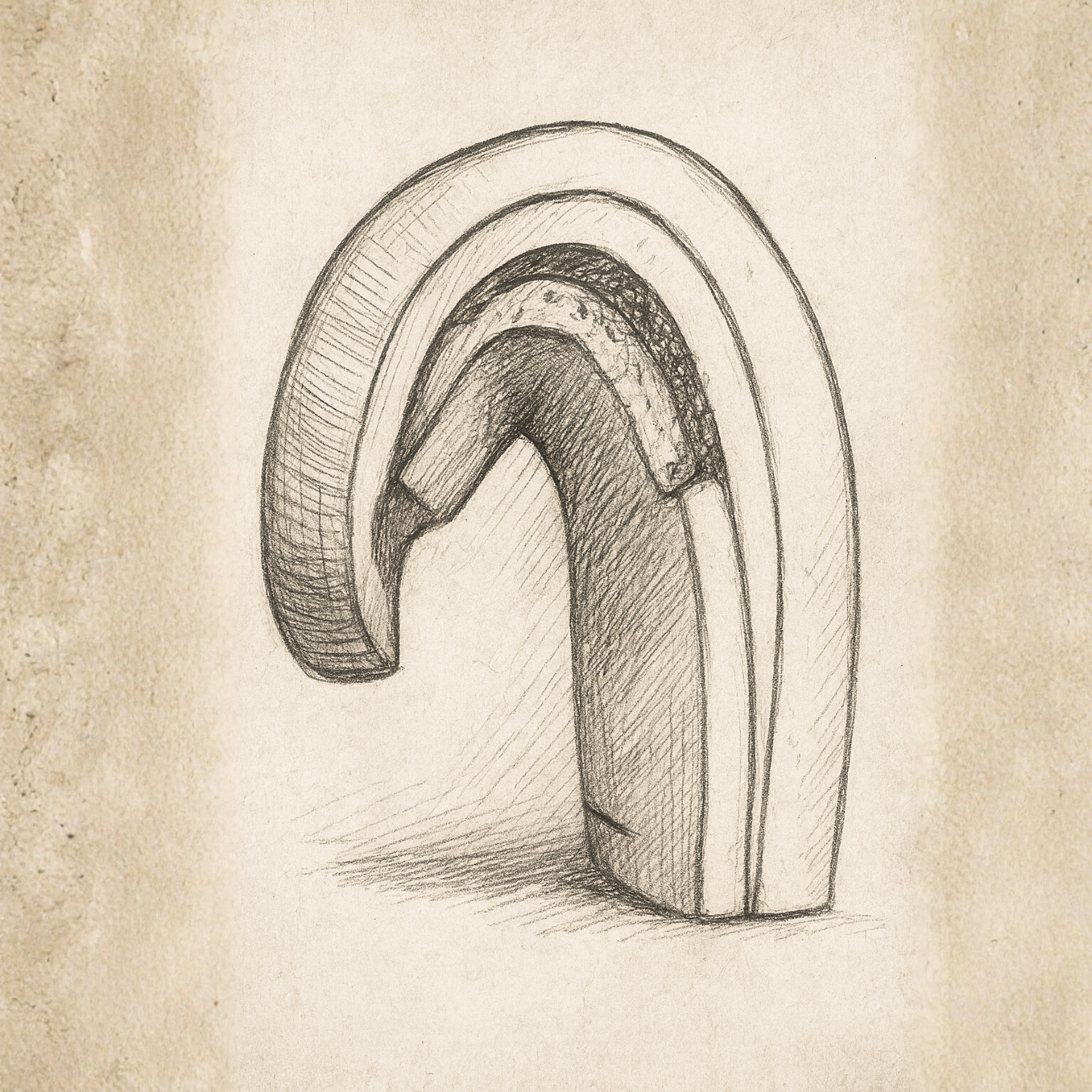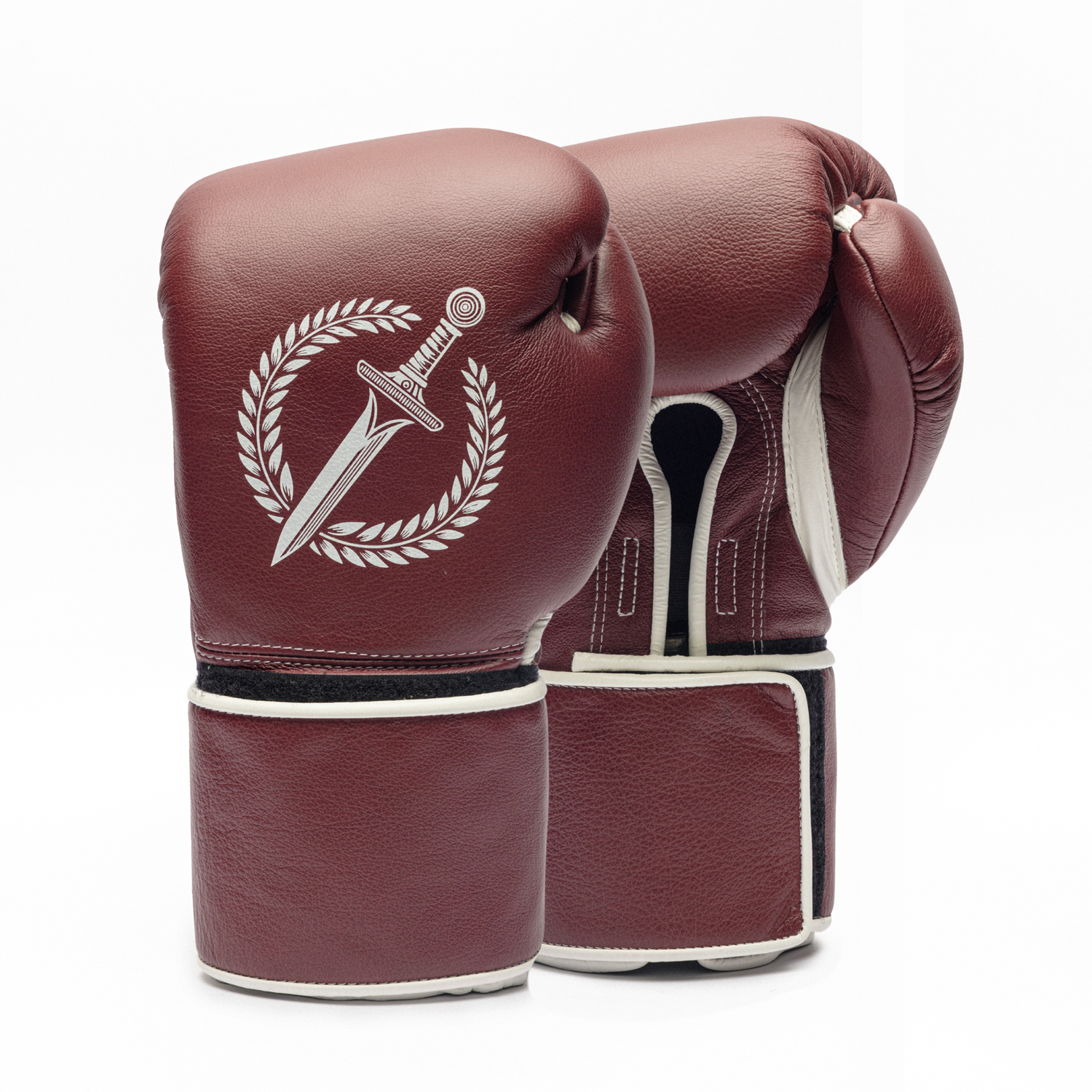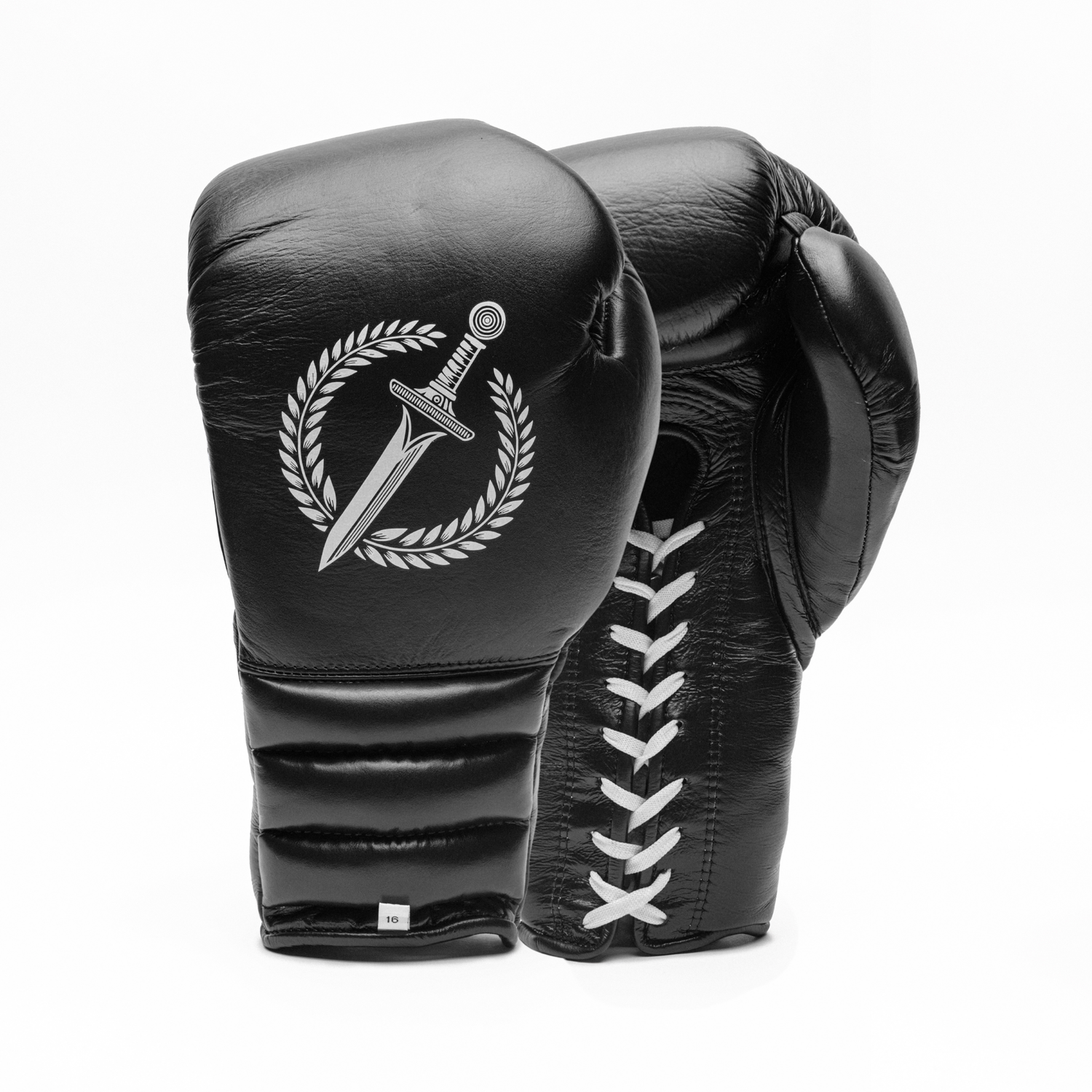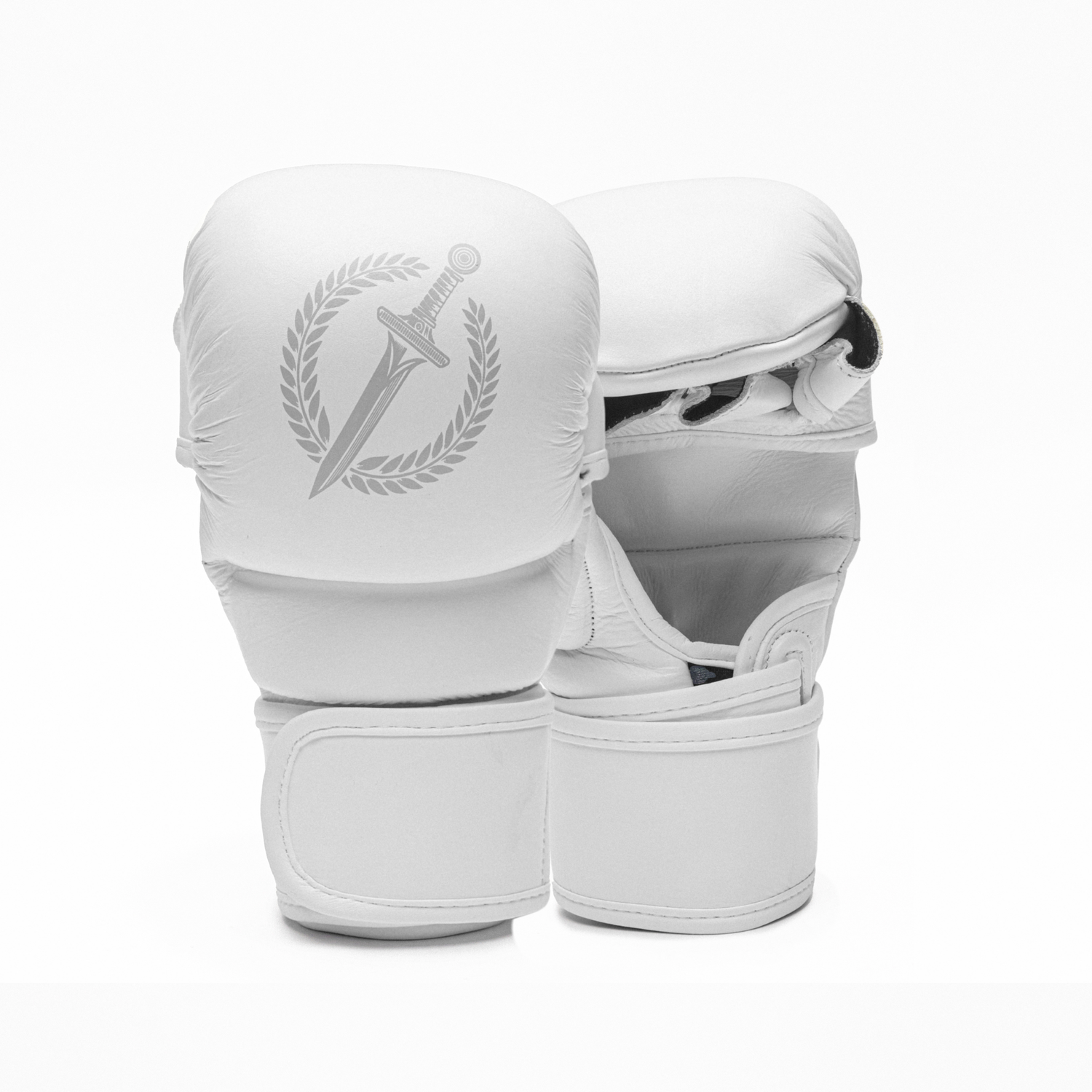When shopping for boxing gloves, most people focus on the outside. Leather type, design, wrist strap, stitching... But the true heart of a glove lies on the inside: the padding.
Padding is what protects your hands, absorbs shock, and determines how the glove feels during training, sparring, or fighting. Taking a bit of time to understand the differences between padding types can really pay off, as you will have more knowledge to differentiate between brands.
Let’s take a look at the most well-known types of boxing glove padding and help you choose the best one for your training needs.
 The boxing glove heart is its padding.
The boxing glove heart is its padding. The 5 most common types of padding
Layered Foam Padding
What it is: Multiple layers of foam with different densities stacked, designed to absorb and disperse impact. This is one of the most commonly used padding techniques by high-end glove manufacturers due to its versatility. The combination of different types of foam can create unique profiles according to the gloves’ intended use.
-
Best for: All-purpose training (bag work, mitts, sparring).
-
Pros: Balanced protection and comfort. Breaks in well over time. Allows for different levels of firmness and feedback depending on the foam combinations used.
-
Cons: Quality varies by brand and the type of foam used. Cheap foam compresses quickly.
 Layered foam padding is one of the most versatile types used by manufacturers.
Layered foam padding is one of the most versatile types used by manufacturers.
Injected Molded Foam (IMF)
What it is: A single molded piece of foam, pre-shaped and inserted into the glove. This type of padding doesn't mix different types of foam, so it lacks the added benefits of combining materials to create a unique feel. It’s usually lower quality than layered foam padding.
-
Best for: Casual training and beginner use.
-
Pros: Consistent shape and low cost.
-
Cons: Can feel stiff, doesn’t mold to the hand over time.

A single piece of injected foam. IMF is the most popular type of padding in the industry due to its low cost and easy production.
Gel & Foam Padding
What it is: A layer of gel, either integrated with foam or used as a separate insert, enhances shock absorption. It's usually placed over the knuckle area to provide an extra boost of protection.
-
Best for: Heavy bag work, hard punchers, and those with hand issues.
-
Pros: Excellent impact absorption.
- Cons: Slightly heavier and bulkier. Can reduce the “punch feel.”

Gel & foam padding is a technique used by some manufacturers to offer more knuckle protection.
Horsehair Padding
What it is: Traditional padding used in professional fight gloves. Often mixed with minimal foam. This padding is made for damage and to offer a lot of punch feedback, so it is not often seen on commercial gloves for training.
-
Best for: Professional fights.
-
Pros: Slim profile with high impact feel.
- Cons: Wears down quickly. Not protective enough for daily training.
Curiosity:
Before fighting Marcos Maidana in 2006, Mayweather objected to his use of horsehair gloves, calling them unsafe. The dispute nearly canceled the bout, and Maidana had to switch to more padded gloves.

Horsehair is the original boxing gloves padding and still very popular among professional fighters.
Hybrid Padding (Foam + Horsehair or Gel)
What it is: A mix of layered foam with horsehair or gel inserts to offe a balanced combination of feedback and protection. These hybrid paddings are often more expensive and custom-built for specific fighting needs.
-
Best for: Competitive athletes and experienced fighters.
-
Pros: Best of both worlds, with excellent shock absorption and performance feel.
-
Cons: More expensive and hard to find commercially.
 Hybrid gloves are the best option for a tailored feel, but often come with a hefty price tag.
Hybrid gloves are the best option for a tailored feel, but often come with a hefty price tag.
Summary on padding types
Here’s a quick summary of everything we’ve covered so far before we move on:
| Padding Type | Best For | Pros | Cons |
|---|---|---|---|
| Layered Foam Padding | All-purpose training (bag, mitts, sparring). |
Balanced protection and comfort. |
Quality varies a lot depending on manufacturer. |
| Injected Molded Foam (IMF) | Casual training, beginners. | Consistent shape. Low cost. |
Stiff feel. Doesn’t mold to the hand. |
| Gel & Foam Padding | Heavy bag, hard punchers, hand protection. | Excellent impact absorption. | Heavier and bulkier. Less punch feedback. |
| Horsehair Padding | Professional fights. |
Slim profile. |
Wears quickly. Not protective for daily use. |
| Hybrid Padding | Professional fights, competitive athletes and experienced fighters. |
Shock absorption with performance feel. |
Expensive. Fit varies. Rare in retail. |

Foam types on boxing gloves padding
We mentioned the word “foam” a lot while explaining the different padding types, but not all “foam” is equal. The quality and properties of the foam used are what determine the effectiveness of a multi-layered foam glove, IMF glove, or hybrid.
The most common types in the boxing world are:
1. Latex foam
-
Feel: Soft, springy, and responsive with a lot of punch feedback and recall. Absorbs shock well but can compress over time.
-
Common in: Most high-quality traditional commercial brands, especially those made in Mexico and known to be "puncher's gloves".
-
Pros: Comfortable, molds to the hand.
-
Cons: Breaks down faster with heavy use. Are not well accepted for sparring.
2. Polyurethane (PU) foam
-
Feel: Dense and firm. Very good impact resistance and shape retention.
-
Common in: Most mid-range gloves ($80-$120)
-
Pros: Durable, keeps shape longer than latex.
-
Cons: Can feel stiff when new. Are not well accepted for sparring.
3. EVA foam (Ethylene Vinyl Acetate)
-
Feel: Harder and more compact than latex. Excellent at absorbing heavy impacts, and often used in multi-layer systems. It’s uncommon to see a glove made entirely of EVA foam.
-
Common in: Thai manufactured and MMA gloves.
-
Pros: Very durable and shock-absorbing.
-
Cons: Can feel overly firm for some users.
4. Memory foam
-
Feel: Soft on contact, then firms up with pressure. Adapts to hand shape, good for comfort and even pressure distribution. Usually called popularly as "pillow glove".
-
Common in: Premium gloves with a strong equity as "sparring safe". Popularized in Japan.
-
Pros: Extremely comfortable, high-end feel.
-
Cons: Less responsive for bag/power training. Punch feedback feels dull.
| Foam Type | Feel | Common In | Pros | Cons |
|---|---|---|---|---|
| Latex Foam | Very responsive. Great punch feedback and recall. | High-quality traditional "puncher's gloves" | Comfortable, molds to hand. | Breaks down faster. Not ideal for sparring. |
| Polyurethane (PU) Foam | Dense and firm with visible shape retention. | Most mid-range gloves ($80–$120). | Durable. Holds shape longer than latex. |
Feels stiff at first. Not sparring-friendly. |
| EVA Foam | Hard and compact. | Thai-made and MMA gloves. | Very durable and shock-absorbing. | Can feel too firm for some users. |
| Memory Foam | Soft on contact, firms with pressure. Adapts to hand shape. "Pillow glove" feel. | Premium sparring gloves. Popularized in Japan. | Extremely comfortable. High-end sparring feel. |
Dull punch feedback. Not ideal for power work. |
Do I need know all this before buying a new glove?
Definitely not. Unless you’re a professional or a seasoned hobbyist looking for something very specific to match your training needs, you don’t need to master all these details.
This information is just a great way to get acquainted with the world of boxing glove manufacturing, but ultimately, you can leave that part to us.
Just focus on what you want to feel when using the glove (firmness, softness, more punch feedback, etc) and a good brand will translate that into the best padding option available in their collection.

Gladius Legionary collection. All our boxing gloves are made with layered foam padding.
What padding type does Gladius use?
Padding types are like each glove brand’s personal philosophy. Some go for soft, highly protective padding, while others favor a firmer, crisper feel. Padding reflects how each brand views the fight game.
At Gladius, we proudly use a layered foam system made from a blend of latex and EVA. Our padding is softer than most Mexican-style gloves but still emphasizes punch feedback. We believe you should feel the impact of every strike. We’re not pillow-like, and we don’t use gel in our composition.
For our professional custom line, we occasionally craft gloves with a mix of horsehair and foam designed to deliver serious damage and support our fighters in chasing the knockout. However, these gloves aren’t sold commercially, as they don’t meet our durability standards for regular training.
What are all the acronyms I see around the padding conversation online?
If you're diving into the world of glove padding, you’ve probably come across a jungle of acronyms (especially on Reddit and gear forums). It can be confusing at first, but once you learn what they mean, you’ll be able to join the conversation and make smarter gear choices.
Let’s break them down and explain each one so you can understand exactly what people are talking about:
| Acronym | Stands For | Key Characteristics |
|---|---|---|
| HHF | Horsehair + Foam | A blend between punch feedback and protection. Considered as a "puncher's glove". |
| HH | Horsehair | Traditional padding used in professional fight gloves. Often mixed with minimal foam. |
| SBP | Soft Broken-In Padding | Super soft feel out of the box. No break-in needed. Less knuckle protection long-term. |
| WCP | W Cushion Padding | Pillowy, protective, and good for sparring. Inspired in Japanese gloves. |
| LAT | Latex foam | Responsive with a lot of punch feedback and recall. Popular in Mexican gloves. |
| PU | Polyurethane foam | Dense and firm. Very good impact resistance, shape retention and protection. |
| PuLat | Polyurethane foam + Latex | Dense and firm. Has good shape retention and punch feedback. A bit less protective than PU alone. |
| Sponge | Foam | One of the 4 types of foam mentioned above: Latex, PU, EVA or Memory. |
| SGP | Sparring Glove Padding | Softer, more pillowy foam to protect sparring partners. |

It is not just about the quality, but also how well the padding is distributed.
Padding distribution also matters
What goes inside the glove matters a lot, but where it goes is equally important. Even the best padding can be wasted if it’s poorly placed.
Some manufacturers focus all the protection on the knuckles, while others distribute it across the wrist, palm, and backhand. This placement doesn’t just affect how much impact your hands can take. It also changes the glove’s balance, wrist support, and overall feel.
High-quality gloves are intentionally designed, with padding shaped and positioned to deliver both protection and performance and align with the brand's vision.
Most premium gloves prioritize:
-
Knuckles: Dense, responsive padding to absorb impact.
-
Wrist: Reinforced padding for better protection and to add balanced weight, preventing the glove from feeling "flappy" (top-heavy).
-
Backhand & Palm: Light coverage to help distribute shock without unnecessary bulk. In Muay Thai gloves, this area often has more padding to help with blocking kicks.





